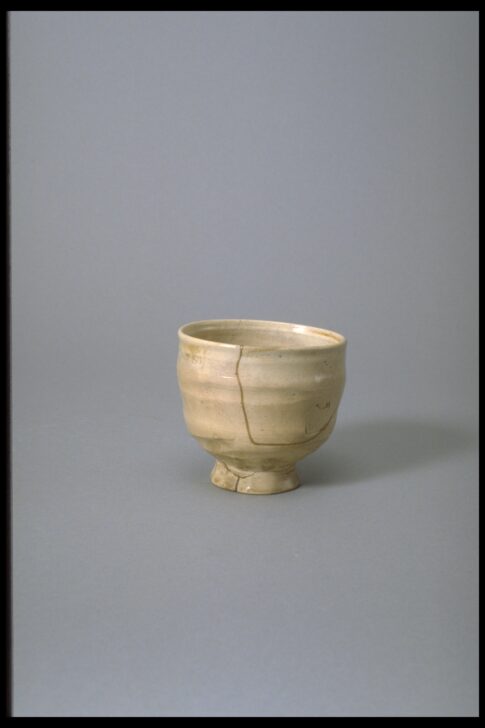Footed Bowl, Hagi ware?
Japanese

Description
Footed bowl
Japan
Edo period (1615–1868)
17th to 18th century
Stoneware
Bequest of Margaret Watson
Parker, 1954/1.541
This small tea bowl is distinguished by an asymmetrical gold line produced through
the kintsugi 金継ぎ ("golden joinery") technique. The bowl was made to be used
during the Japanese tea ceremony, which peaked in popularity during the sixteenth
century, when it was embraced by the military elite. From the format of the tea
room to the style of utensils, the ceremony was heavily influenced by tea masters
such as Sen no Rikyū (1522–1591), who favored simple utensils that embodied the
principles of wabi-sabi—an aesthetic associated with simplicity and imperfections.
The process of kintsugi, whereby a substance comprised of lacquer mixed with gold
dust was used as an adhesive to mend broken pottery, emphasized imperfections
and cracks through decorative means. Ceramics and lacquerwares employing this
technique came to be highly sought-after from the Edo period onward.
(Japanese Gallery Rotation, Summer 2025)
Usage Rights:
If you are interested in using an image for a publication, please visit https://umma.umich.edu/request-image/ for more information and to fill out the online Image Rights and Reproductions Request Form.